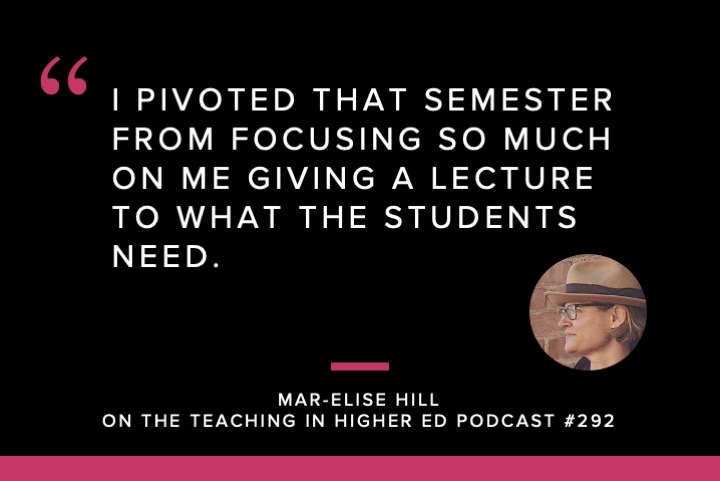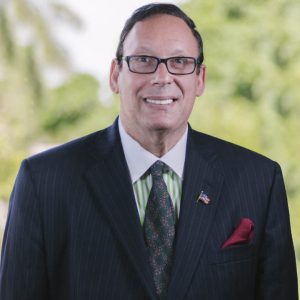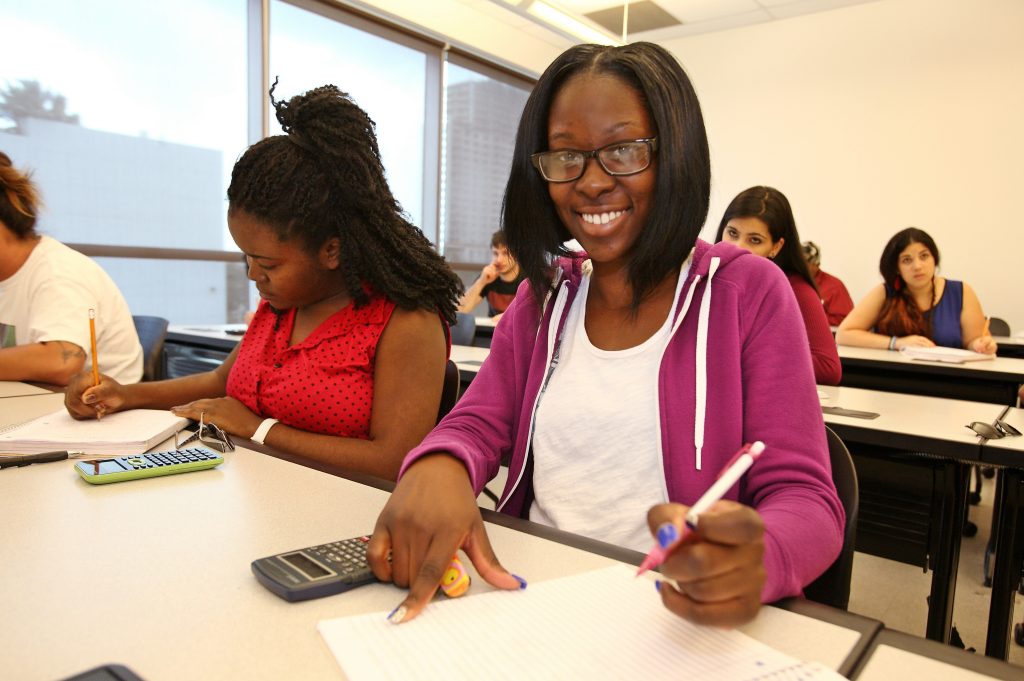



When it comes to improving classroom attendance and student engagement, sometimes the simplest strategies are the most effective. At least that’s what Indika Walimuni, ACUE-accredited instructor of physics and computer science at City College of San Francisco (CCSF), says.
“I started teaching in 2017 and wanted to be an effective instructor but didn’t know how. I didn’t realize how important some of those soft skills are in the classroom,” Walimuni explains. “As a result of what I learned during the ACUE program, I made an effort to engage my students in a way that promotes inclusivity and diversity, while incorporating more mentoring into the classroom. I also started asking for a lot of feedback from my students—right from the beginning of the semester.”
And he quickly started to see the effects.
“My retention rate was around 60% before I started implementing some of these practices. It then improved to close to 90%,” he says.
His results aren’t surprising, says CCSF political science professor Megan Sweeney. She noticed a similar trend in her own classroom.
 “I have been teaching for close to 10 years. I had hunches of what worked and what didn’t, but then I started looking at the data behind those practices. I use a lot of active engagement techniques and strategies—whether it’s a self-assessment where students share with me something important they took away from that day or a surprising fact they learned,” Sweeney, an ACUE-certified instructor, says. “I started to implement a variety of strategies that make my students reflect on what they’re learning, examine what they would do differently, and understand the areas they’re struggling in.”
“I have been teaching for close to 10 years. I had hunches of what worked and what didn’t, but then I started looking at the data behind those practices. I use a lot of active engagement techniques and strategies—whether it’s a self-assessment where students share with me something important they took away from that day or a surprising fact they learned,” Sweeney, an ACUE-certified instructor, says. “I started to implement a variety of strategies that make my students reflect on what they’re learning, examine what they would do differently, and understand the areas they’re struggling in.”
Sweeney, like Walimuni, began seeing improvements not only in her classroom attendance, but also in student success. And their experience is consistent with findings from a recent ACUE research brief which demonstrates there was a significant increase in the rate of students receiving As and a significant decrease in the rate of students receiving Fs in sections taught by ACUE-credentialed faculty.
CCSF, a part of the California Community Colleges (CCC) system, is one of several colleges working to change institutional practice and policy in order to improve student success and outcomes. In fact, CCC serves as a scaling site within the Education Commission of the State’s Strong Start to Finish initiative.
“Investing in the faculty of our California Community College System is like investing in the core of the system. They are truly the ones that make change happen. They are the ones that impact students’ lives more than anyone else on our campuses,” says Eva Jimenez, associate vice president of economic & workforce development at another CCC school, Shasta College.
Sweeney would agree.
“My students’ persistence has greatly improved, and I think a lot of that has to do with implementing strategies that engage my students. Now when I’m lecturing and I see my students aren’t engaged with the material, I know to switch up my tactics to get them involved,” she shares. “Now I see my students make sure to show up because they really want to be there.”

Jessamyn Neuhaus is a proud combination of geek, introvert, and nerd. What drew her to academia, after all, is the joy she derives from working and researching in complete solitude.
But what does that mean for her role as an educator? In her book Geeky Pedagogy, Neuhaus grapples with her inner nerd and explores how scholars can embrace their introverted characteristics when teaching students. At the same time, she argues that all educators—introverted or not—must recognize their inherent limitations and understand that “emotions and positive interactions play a huge role in effective teaching.” In this interview, Neuhaus discusses living with extroverts, how embodied identity affects teaching and learning, and why she avoids terms like “the best teachers.”
What do you mean when you say your personal life has been a “master class in nerds vs normals,“ and how did it inspire you to write Geeky Pedagogy?
When I was in ninth grade, I learned how to write a research paper and correctly cite sources to support my argument. I loved it! I knew immediately that I was going to be really good at doing this. Fellow scholars may recognize themselves in this anecdote but it’s definitely not a typical student reaction. I didn’t grasp how such formative academic experiences shaped my view of education until my only child began school. For him, academics were just something he had to endure between recess, gym, and socializing. The same is true for my significant other. Not coincidentally, they’re both extroverts who deeply dislike the solitary aspects of studying and having their intellectual work assessed by a teacher. Living with them provides a constant reality check about how people who aren’t professional scholars often feel about the scholastic activities that came so easily, even joyfully, to me. It has also helped me understand how being an introvert influences every aspect of my life, including my teaching. I wrote Geeky Pedagogy because I did not see this important reality—being a nerdy introvert who loves school but is not great at peopling—discussed much in the scholarship of teaching and learning (SoTL), yet many of us in higher education fit this description.
Why do you use the term “effective” teaching throughout the book and avoid terms like “good,” “excellent,” or “exemplary” teaching?
There’s a persistent and entrenched myth of the “super-teacher” in our culture. It’s a highly idealized, narrowly defined, and unrealistic image of what good college teaching looks like: a charismatic (usually white, cisgendered male) professor standing in a lecture hall expounding effortlessly while students magically learn merely by being in his mesmerizing, erudite presence. Although it’s unintentional, SoTL that uses terms like “excellent teaching” or “the best teachers” can trigger the super-teacher fantasy, which subsequently undermines faculty’s belief in their own unique abilities to help students learn. For example, I recently read about a highly accomplished teaching professor who’s also a longtime standup comic, and I immediately started comparing my teaching persona to hers. As a geeky introvert, will my pedagogy ever be a stagey laugh-riot performance? Um, no. But then I remembered to ask myself: Can I clearly identify ways that I’m advancing my students’ skills and abilities, in my own teaching context? Am I being effective? Yes, I am.
From the start of your book, you make it clear that identity is one of the most important–if not the most important–aspects to be aware of when it comes to teaching and learning. Why?
I agree with the interdisciplinary evidence-based scholarship on teaching and the science of learning that identifies best practices for any college classroom. At the same time, I believe educational development professionals should, more consistently, acknowledge how embodied identity affects academia generally and teaching and learning specifically. Our perceptions of students and their perceptions of us are shaped in significant ways by identity-based power structures. For instance, patriarchal gender norms are always at work. Systemic white body supremacy (a term I recently learned from Michelle Cromwell, SUNY Plattsburgh vice president of diversity, equity and inclusion) is always at work. The result is what sociologist Roxanna Harlow defines as “disparate teaching realities.” Much of the general advice on teaching assumes a level playing field that simply does not exist and, in so doing, directly contributes to the disempowering idea that any challenges we face as teachers are always entirely of our own making, totally removed from socioeconomic, cultural, and political systems. Nothing in SoTL more dramatically undercuts teaching self-efficacy than the unspoken presumption that “If you simply do X, Y, and Z correctly, you will be effective.” Rather, all teaching advice should be: “In your individual teaching context and taking into account the racial, gender, and other identity hierarchies in which we all live, X, Y, Z may be effective. Try it and see.”
What surprised you the most while researching this topic for your book?
The most surprising, and disconcerting, result of my research was realizing how many aspects of effective teaching and learning are grounded in positive interpersonal exchanges between teachers and students. The reason I became an academic in the first place was because I love reading, writing, and thinking in complete solitude! Of course, effective teaching does require some solitary brainwork—studying SoTL, planning effective assignments and classes, reflecting on pedagogical practices, and so on. But I had to let go of my unexamined supposition that the college classroom is a purely intellectual space in which to explore ideas and debate abstract concepts. We’re human beings, not Vulcans like Mr. Spock, so emotions and positive interactions play a huge role in effective teaching and learning techniques such as building rapport with students and communicating pedagogical transparency.
If there is one thing that you’d want readers of Geeky Pedagogy to take away from the book, what would it be?
We academic nerds and scholarly geeks can use our big brains to teach effectively. We can use our scholarly skills to increase our pedagogical knowledge—that is, how to teach students to do things in and with our academic disciplines—by engaging in the five areas of pedagogical activity described in Geeky Pedagogy: cultivating awareness of the realities of teaching and learning (specifically that identity is important, learning is hard, knowing who our students are and who we are); preparing carefully for all aspects of effective teaching and learning, especially the social interactions and interpersonal communication that may not come easily to introverts; reflecting honestly and systematically on our teaching efficacy, including paying attention to what we’re doing well; and getting support for our teaching by reading and participating in SoTL and other educational development. In short, nerd out about teaching and learning!
Bio
Jessamyn Neuhaus is a professor of US history and popular culture at SUNY Plattsburgh, a scholar of teaching and learning, and a recipient of the SUNY Chancellor’s Award for Excellence in Teaching. Visit geekypedagogy.com or follow her on Twitter at @geekypedagogy to learn more.

Q&A with Andrew Burnstine, associate professor of fashion marketing and management at Lynn University
 What motivated you to complete your ACUE certification?
What motivated you to complete your ACUE certification?
For the past several years, I had noticed that many of my course lectures, discussions and materials were old and outdated. My course reviews were fine. What got my attention were some of the student comments. They all had a general theme and direction: “Please don’t lecture at us. Lecture to us!” This was my wake up call. I realized that in order to stay relevant in both my on-ground and online classrooms, I needed to revert to becoming a student once again and find out what was lacking in my current teaching style and pedagogy.
What are some successful practices you have implemented in your classroom related to guided pathways?
I have developed a few new practices in both my on-ground and online courses. They include using video technology for course introductions, announcements, and grading in the online gradebook. I have been using Screencast-o-matic video technology with great success in all of my courses.
I begin the semester by using a video introduction in Canvas. This is a great icebreaker technique, which also helps create an immediate bond between the students and me. I also create videos for course announcements, introductions for Canvas modules, and grading assignments. Step-by-step videos on “How to do a final oral presentation” and “What to include in your final critical written assignment” help students address the many questions and worries they might have about assignments and projects. Students have also indicated on several course evaluations that they really have gotten a lot out of the video reviews. Many students have asked that other Lynn University faculty do something similar in their own courses as well.
How did the ACUE course help you develop or refine these practices?
My incredible peers and ACUE course facilitator were the ones who really helped me develop and refine my weekly course work. Comments on discussion threads with suggestions and improvements were a great way to refine my own work. In my case, the best practices were the comments and suggestions from the ACUE facilitator. This person always was “dead on” with comments and suggestions that could expand on the work I was doing in my own classroom, as well as commenting on how to change or redo techniques that did not work so well. I like to think of these techniques as “teachable moments” and “best practices”—new tools that I can use to create a safe and enjoyable learning experience for all of my students.
Why do you think students respond well to these practices, and what are they gaining?
Students respond well to these practices because they perceive that you care for them and their well-being. One of the biggest takeaways from the ACUE course was the importance of listening to my students! That is, listening to who they are, what they want, and what will help them grow. These are the motivators that we all can use as educators to reach out to our students and help them gain the knowledge and experience they will need to succeed in their chosen fields.
Do you recall an “ah-ha!” moment when you realized the changes you were making in the classroom based on the new teaching practices were having a meaningful impact on a specific student or group of students?
My “ah-ha” moment was realized when one of my on-ground students informed me that they had reviewed my video feedback for a case study they had done—ten times! They commented that they watched the video so many times because it helped them identify all of the areas they needed to improve. This student also stated this type of visual feedback was much more helpful to them than including feedback with written comments. This was the “ah-ha” and the “light bulb” all going off in one moment. It was the validation that the techniques I had tried out in my classrooms were indeed making a meaningful impact on students.
What do you look for in alumni or mentors you are bringing into the classroom?
I look for someone who has the background and experience with the course and subject matter being presented to the students. I have had great success with recent alumni, business professionals, and mentors. The most important qualifications are finding individuals who (1) are good listeners, (2) have an interesting and dynamic story to tell, and (3) are interested in having a continued relationship with our students. Students are most interested in those individuals who take the time to answer questions after the lecture, as well as invite students to call or email with any questions. Recent alumni are also wonderful speakers to bring into your classroom, as they have recently graduated and should have great things to say about their program. In many cases, they are relatively near the student’s age and have relevant experiences to share with the students. Speakers from the Career Services Center are also a valuable asset for our students. They have a wealth of knowledge and can assist students in job preparation, interviewing, and securing their future “dream” job within their career path.
About Dr. Andrew Burnstine
Dr. Andrew Burnstine has been teaching and chairing fashion marketing and design programs for over 25 years. Burnstine was chairperson of the fashion marketing and management program at Berkeley College in NY and also ran a fashion marketing and design program at American Intercontinental University, in Weston, Fla. Burnstine has taught at many universities and colleges around the country, including: New York University, Westchester Community College, SUNY Purchase College, Kent State University, and LIM. He was executive vice president of Martha Inc., an exclusive women’s specialty store chain in New York City and Florida where he acted as buyer, merchandiser, and director of operations. Burnstine has received numerous awards and academic honors, including Teacher of the Year awards, and The University Medallion from Kent State University. He also has written and contributed academic publications for the Academy of Business Research and the International Organization of Social Sciences and Behavioral Research. He has a B.A, M.A., and Ph.D. from New York University.

By Cindy Blackwell, Ph.D.
 From the moment I dropped the first mouse into the snake’s cage, I knew my life was not going quite as I had planned. More than five years after earning my Bachelor of Journalism degree from the University of Texas at Austin, I found myself feeding snakes in order to feed myself as I waited for my graduate school application to be processed.
From the moment I dropped the first mouse into the snake’s cage, I knew my life was not going quite as I had planned. More than five years after earning my Bachelor of Journalism degree from the University of Texas at Austin, I found myself feeding snakes in order to feed myself as I waited for my graduate school application to be processed.
This experience is one of my many early career experiences that informs how I teach. As an accidental academic, I have always stressed career skills in courses but not always in an intentional manner.
In recent years, I have learned ways to make career readiness a deliberate undercurrent in the classroom in an effort to better prepare students to succeed in their careers as well as in the professional workplace. Through my experience in the classroom, as well as with ACUE’s program, I learned that by focusing on relevancy, accountability, and connections, I can help students begin their transition by integrating professionalism into the course structure.
“Relevance wins,” as Jeremy Podany, CEO of Career Leadership Collective, says in the first module of the ACUE Career Guidance and Readiness course. The relevance of coursework needs to be evident on many levels—from assignment application to career connections—to help students better engage with content.
While relevancy is more obvious in specialized or major-related courses, instructors can make clear the relevance of other courses, including and especially general education courses. Several of my public relations students struggle through algebra and statistics, but I repeatedly remind them they will need to understand algebra when negotiating contracts and statistics when analyzing data to identify key audiences. Without this knowledge, they will struggle as public relations professionals.
I also offer relevancy with expectations of classroom conduct. Drawing parallels between classroom behavior and the workplace demonstrates to students how similar actions will be perceived in the workplace.
When students ask me questions that they can easily find on the syllabus or another obvious place, I respectfully tell them not to waste their supervisor’s time by asking questions they can easily answer on their own. Packing up early? You are sending a signal to your supervisor that your time is more important than hers. Many of these teachable moments emphasize specific career skills, which are focused on interpersonal relationships or emotional intelligence.
Many college courses have late work policies that take a percentage off of the final grade if an assignment is submitted after the due date; however, such late work policies do not translate well to the professional world. On the first day of a course, I tell students I do not accept late work, explaining that in the workplace, your supervisor will not accept late work. This is transparent on the syllabus: if there is a deadline, you must meet it. Similarly, when asked if I offer extra credit, I tell students that I have never had a supervisor offer me extra credit.
Of course, I also buffer these points by letting students know that life does happen. If a significant life event prevents a student from coming to class or from submitting an assignment, I expect him or her to contact me, just as one would contact a supervisor. If an assignment was given several days ago, I will ask questions about its status, and I might also ask to have the assignment be sent in its current form.
On the first day of class, I have students complete a student survey similar to the one offered in Module 2c, “Connecting with Your Students,” in ACUE’s Career Guidance and Readiness Course. I read through their answers and organize the surveys according to career areas of interest. When colleagues are looking for a volunteer for a day or an intern for the next semester, these surveys allow me to quickly refer specific students to such opportunities. This demonstrates to students the value of networking and making connections well beyond the classroom. Connections are also made through professional guest speakers as well as reviewing job postings with students that offer insight into what will be expected of them in the future.
By emphasizing and building upon important professionalism elements regarding and highlighting relevancy, practicing accountability, and modeling connections, students can practice daily what will be expected of them in the professional workplace. With small changes, instructors can prepare self-actualized professionals who are ready to meet the challenges of the workforce—including feeding snakes.
Cindy Blackwell is an ACUE Academic Director and earned her ACUE Certificate in Effective College Instruction in 2017 at The University of Southern Mississippi.

This video features guest Dr. Rita Cheng, president of Northern Arizona University.
Bio 181 at Northern Arizona University used to be known as a “weed out” course, with about 30% of students dropping out. It’s a gateway too—required for 25 majors, meaning that about 1 in 10 students need to pass it. When a companion study skills class didn’t improve retention, NAU completely redesigned it with great success.
President Rita Cheng talked with ACE’s Assistant Vice President of Professional Learning Sherri Hughes about the impact that this and other similar efforts have had in building a culture of instructional excellence and student success at NAU.
“We were able to cut the D,F and W (rate) in half, and our underrepresented students…saw even greater results,” said Cheng.
This new series offers an informal opportunity to learn from a range of leaders and experts on timely topics relevant to students’ success. A Conversation on Student Success is produced in collaboration with the Association of College and University Educators.
Watch the introductory clip, and then create a complimentary account on ACE Engage® to watch the full video and weigh in.
Create a complimentary account on ACE Engage® to watch the full video and weigh in. ACE Engage is ACE’s peer-to-peer online community and learning platform for higher education executives.
When you click to watch the full video, you will be asked to first Log In or Sign Up.

Can seemingly minor adjustments to teaching practices, such as the introduction of peer-to-peer instruction and detailed scoring rubrics, make a difference in learning outcomes? Dr. Kyla Williams—a Broward College assistant professor who has taught mathematics for more than 15 years—intended to find out.
“As a math teacher, I was interested to see how these changes could really shift the dynamic of my classroom,” Williams explains.
Williams created a scoring rubric to include on her tests to show students how their exams would be scored. It took some creativity, she said, to apply a rubric-style scoring system that is more commonly seen in English classes to mathematics problems.
“I’ve historically given partial credit when a student shows his or her work, but I laid out in a rubric on their test sheet how I would give a certain number of points for the derivative, a certain number of points for the algebra portion, etc.,” Williams says. “I didn’t anticipate my students’ scores to go up from something so simple, but they did. I think that rubric, which shows my students how each step of the process would reward them additional points, forced them to show their work—making them less likely to skip steps and make minor errors in their calculation.”
Beyond testing, Williams, an ACUE-credentialed instructor, also saw classroom participation and engagement go up based on cooperative learning techniques.
“I started incorporating more group discussion and collaboration where my students learn together as a whole and team-teach one another,” Williams explains. “I teach with my iPad and often walk around the room and write on it and project the work on the board. I started letting my students take my iPad and write answers themselves and give them the opportunity to explain their answers and help teach their classmates.”
That sense of collaboration, Williams believes, has built a level of camaraderie among her and her students.
“My associate dean and colleagues always laugh because there’s constant stream of students popping by my office to chat,” Williams says. “But I think it’s because I’ve created more of a community in my classroom. I’m not just standing at the front of the class talking at them for an hour and a half. It’s more like we’re learning together as a group.”
Williams’ embrace of best-practices in education are reflective of a larger trend happening within Broward College, which is consistently recognized as one of the most innovative community colleges in the nation – due, in part, to partnerships with organizations like the Association of College and University Educators (ACUE) to introduce evidence-based teaching practices that promote student engagement, persistence to graduation, career readiness, and deeper levels of learning.
Recently, Broward College was named among 10 finalists for the 2019 Aspen Prize for Community College Excellence. Broward was also recognized as a finalist in 2016 and 2013, and in 2017 the college was recognized as an Aspen Prize Finalist with Distinction, which included a $100,000 award.
There are various approaches to studying the impact of teaching on student success. For instance, Carl Weiman, Nobel Laureate and champion of effective teaching, believes student learning outcomes are best measured by asking the students directly if they are experiencing proven teaching approaches. For Williams, the feedback from her students shows her that her new approach is working.
“Shortly after I started implementing some of these new teaching practices, I’d have students tell me, ‘I’ve never had a professor who teaches like you do,’” Williams laughs. “These practices have resulted in a more comfortable and productive classroom environment.”
View ACUE’s Broward College Research Brief.